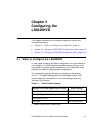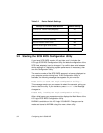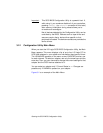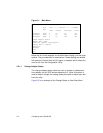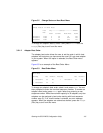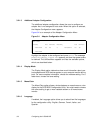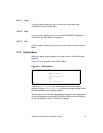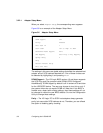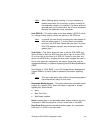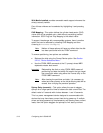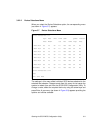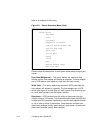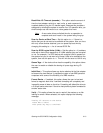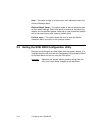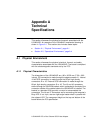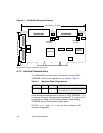
Starting the SCSI BIOS Configuration Utility 3-9
Note: When disabling parity checking, it is also necessary to
disable disconnects for all devices, as parity checking for
the reselection phase is not disabled. If a device does not
generate parity, and it disconnects, the I/O never completes
because the reselection never completes.
Host SCSI ID – This option refers to the host adapter’s SCSI ID, which
is a unique number used to identify the device on the SCSI bus.
Note: In general, the user should not change the host adapter ID
from the default value of 7, as this gives it the highest
priority on the SCSI bus. Please also note that if you have
8-bit SCSI devices (narrow), they cannot see host IDs
greater than 7.
Scan Order – This option allows the user to tell the SCSI BIOS and
device drivers to scan the SCSI bus from low to high (0 to max) SCSI
ID, or from high to low (max to 0) SCSI ID. If there is more than one
device on the SCSI bus, changing the scan order changes the order in
which drive letters are assigned by the system. Drive order may be
reassigned differently in systems supporting the BIOS Boot Specification
(BBS).
See Chapter 2, “SCSI BIOS,” in the PCI Storage Device Management
System SDMS 4.0 User’s Guide for additional information regarding
BBS.
Note: This scan order option may conflict with operating systems
that automatically assign a drive order.
Removable Media Support – This option defines the removable media
support for a specific drive. When this option is selected, a window
appears with three choices:
• None
• Boot Drive Only
• With Media Installed
None indicates there is no removable media support whether the drive
is selected in BBS as being first, or first in scan order in non-BBS.
Boot Drive Only provides removable media support for a removable
hard drive if it is first in the scan order.



